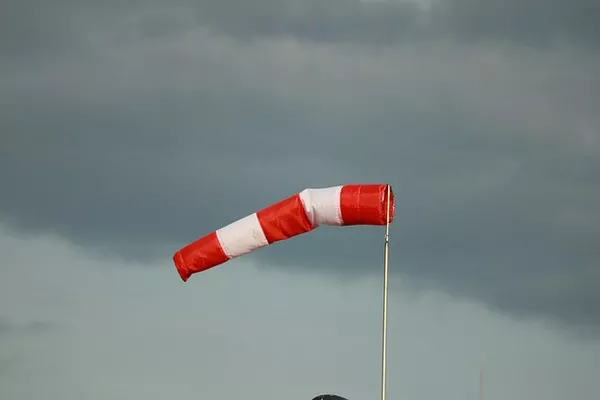Wind, a natural force with profound effects on our environment, has been measured and studied for centuries. Understanding wind patterns is crucial for various industries and disciplines, from meteorology and aviation to renewable energy and environmental monitoring. At the heart of wind measurement lies the anemometer, a device designed to accurately quantify wind speed and direction. In this article, we delve into the mechanics, types, and applications of anemometers, shedding light on their pivotal role in understanding and harnessing the power of wind.
An Overview of Anemometers:
An anemometer is a scientific instrument used to measure wind speed and, in some cases, direction. The device operates on the principle of airflow impacting a sensor or rotating element, whose motion is then converted into a measurable output. Anemometers come in various designs, each tailored to specific applications and environmental conditions.
Types of Anemometers:
Cup Anemometer: Among the most common types, cup anemometers consist of three or more cups mounted on horizontal arms. As the wind blows, the cups rotate around a central axis. The speed of rotation is directly proportional to wind speed, allowing for precise measurement. Cup anemometers are highly reliable and widely used in meteorological stations, wind farms, and research facilities.
Vane Anemometer: Unlike cup anemometers, vane anemometers measure both wind speed and direction. They consist of a tail-mounted vane that aligns itself with the wind direction, coupled with a sensor to measure angular displacement. Vane anemometers are essential for applications where wind direction is as important as wind speed, such as weather forecasting and aviation.
Hot-Wire Anemometer: Hot-wire anemometers utilize a thin wire heated to a constant temperature above the ambient air. As wind passes over the wire, it cools down, leading to a change in electrical resistance. By measuring this change, the device can calculate wind speed. Hot-wire anemometers are highly sensitive and ideal for measuring low air velocities in laboratory settings and boundary layer research.
Sonic Anemometer: Sonic anemometers employ ultrasonic pulses to measure wind speed and direction. They consist of multiple pairs of transducers positioned at known distances apart. By measuring the time it takes for sound waves to travel between transducer pairs in different directions, the device can accurately determine wind speed and direction. Sonic anemometers are commonly used in atmospheric research, turbulence studies, and wind profiling.
Doppler Lidar: Doppler lidar is an advanced remote sensing technology that utilizes the Doppler effect to measure wind speed at various altitudes. By emitting laser pulses into the atmosphere and analyzing the frequency shift of the backscattered light, Doppler lidar can provide high-resolution wind profiles over long distances. This technology is invaluable for wind resource assessment, atmospheric monitoring, and wind energy optimization.
Measuring Wind Speed:
The measurement of wind speed using an anemometer involves converting the rotational or linear motion of the sensing element into a readable output. This is typically achieved through mechanical or electronic means, depending on the type of anemometer.
In cup anemometers, for instance, the rotational speed of the cups is converted into wind speed through a gearbox mechanism and then displayed on a calibrated scale or transmitted electronically to data logging systems. Similarly, vane anemometers translate the angular displacement of the vane into wind direction and speed readings.
Hot-wire anemometers utilize electronic circuits to measure the change in electrical resistance of the heated wire, which is then converted into wind speed values. Sonic anemometers rely on sophisticated signal processing algorithms to analyze the time-of-flight of ultrasonic pulses and calculate wind speed and direction accurately.
Factors Affecting Anemometer Accuracy:
While anemometers are highly precise instruments, several factors can affect their accuracy and reliability:
Calibration: Regular calibration is essential to ensure the accuracy of anemometer readings. Calibration involves comparing the device’s output to a reference standard under controlled conditions and making any necessary adjustments.
Environmental Conditions: Wind measurement can be influenced by factors such as temperature gradients, atmospheric stability, and terrain roughness. Anemometers must be installed and maintained in accordance with standard guidelines to minimize environmental biases.
Instrument Error: Mechanical wear and tear, electronic drift, and sensor degradation can introduce errors into anemometer measurements over time. Routine maintenance and quality assurance procedures are necessary to mitigate instrument error.
Applications of Anemometers:
Anemometers play a critical role in numerous fields and applications:
Meteorology: Anemometers are fundamental tools for weather monitoring and forecasting, providing vital data on wind patterns, atmospheric circulation, and storm development.
Aviation: Anemometers are installed on aircraft, airports, and air traffic control towers to assess wind conditions and ensure safe takeoffs, landings, and flight operations.
Renewable Energy: Anemometers are used in wind resource assessment and site characterization for the development of wind farms and other renewable energy projects. Accurate wind speed data is essential for optimizing turbine performance and energy production.
Environmental Monitoring: Anemometers are employed in environmental research and pollution dispersion studies to understand airflow patterns and assess air quality in urban and industrial areas.
Sports and Recreation: Anemometers are utilized in activities such as sailing, kiteboarding, and paragliding to measure wind conditions and enhance safety and performance.
Conclusion:
Anemometers are indispensable instruments for measuring wind speed and direction across various applications and industries. Whether it’s predicting weather patterns, optimizing wind energy production, or ensuring safe aviation operations, the accurate measurement of wind is essential for informed decision-making and risk management. As technology advances, so too will the capabilities of anemometers, further enhancing our understanding of this powerful natural force.

